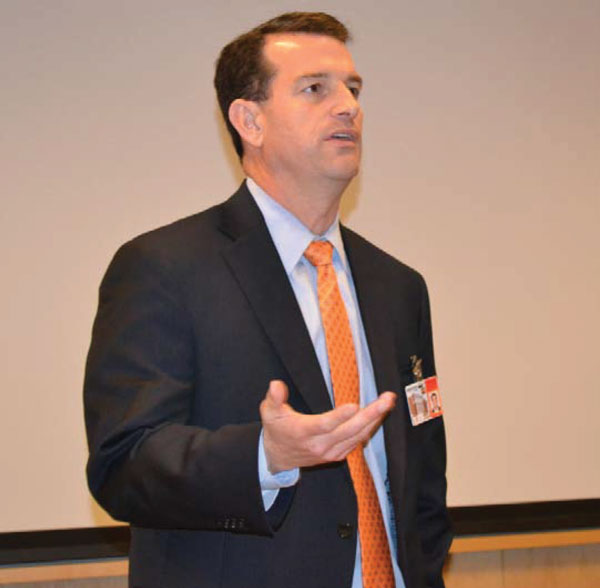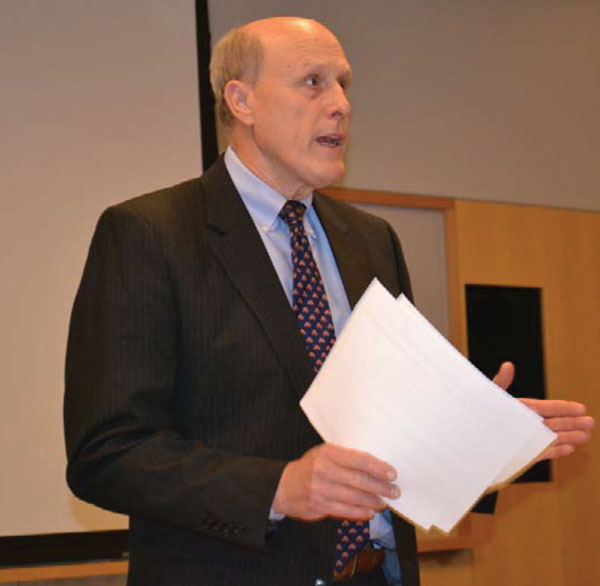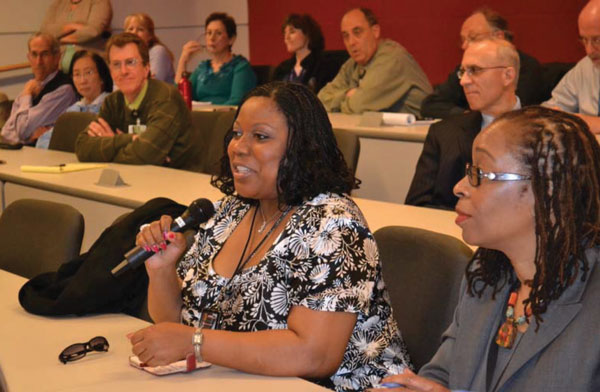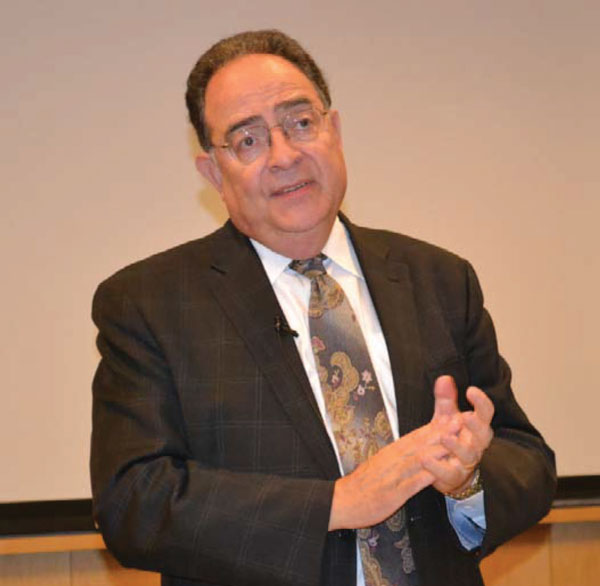About UMB History, highlights, administration, news, fast facts
- Accountability and Compliance
- Administration and Finance
- Center for Information Technology Services
- Communications and Public Affairs
- Community Engagement
- Equity, Diversity, and Inclusion
- External Relations
- Government Affairs
- Philanthropy
- Office of the President
- Office of the Provost
- Research and Development
- University Counsel
- Office of the President
- Administrative Officers
- Deans
- Boards of Visitors
- Faculty Senate
- Staff Senate
- University Counsel



 I’d like to talk a little bit about the implementation process. You’ll remember we formed an Executive Implementation Committee (EIC), which involved pairing a dean or a vice president with one of the original leaders of the strategic plan themes, in an effort to maintain continuity from planning to implementation.
I’d like to talk a little bit about the implementation process. You’ll remember we formed an Executive Implementation Committee (EIC), which involved pairing a dean or a vice president with one of the original leaders of the strategic plan themes, in an effort to maintain continuity from planning to implementation.  One of the big themes was to achieve pre-eminence in the area of innovation. After a lot of discussion, we concluded we should support one major research program opposed to a plethora of research programs. This will come under the title of Research Harbor. This is a utility, a resource, that’s being developed for this University for faculty, staff, and students to pose questions about their environment. Not just health-related questions, it also will include law, social work, and other questions. So what is a Research Harbor? It is going to be a physical location, but also a virtual location, where a set of databases, resources, and information will be highly accessible. A broad set of agendas aimed at using informatics as a major mechanism for UMB to become pre-eminent in terms of questioning health care, legal profession, and social work data sets. We have committed $400,000 of one-time funding to finish the harbor; significant funds already exist from other sources. Then a recurring $250,000 a year to provide these other mechanisms to help you ask questions and interpret your data.
One of the big themes was to achieve pre-eminence in the area of innovation. After a lot of discussion, we concluded we should support one major research program opposed to a plethora of research programs. This will come under the title of Research Harbor. This is a utility, a resource, that’s being developed for this University for faculty, staff, and students to pose questions about their environment. Not just health-related questions, it also will include law, social work, and other questions. So what is a Research Harbor? It is going to be a physical location, but also a virtual location, where a set of databases, resources, and information will be highly accessible. A broad set of agendas aimed at using informatics as a major mechanism for UMB to become pre-eminent in terms of questioning health care, legal profession, and social work data sets. We have committed $400,000 of one-time funding to finish the harbor; significant funds already exist from other sources. Then a recurring $250,000 a year to provide these other mechanisms to help you ask questions and interpret your data.  Ms. Powell: On Jan. 1 in 2014, we will receive a 3 percent COLA (Cost of Living Adjustment) that will be in place for all UMB employees. We also will be eligible to receive a merit increase in April 2014. The details need to be worked out. Human Resources will have much more about this in upcoming months.
Ms. Powell: On Jan. 1 in 2014, we will receive a 3 percent COLA (Cost of Living Adjustment) that will be in place for all UMB employees. We also will be eligible to receive a merit increase in April 2014. The details need to be worked out. Human Resources will have much more about this in upcoming months. Plans for the new facility are under way, being coordinated through a campuswide planning committee. The new facility will offer a plaza where people can enjoy the outdoors and eat lunch. But, obviously it will start with demolition. The state legislature has been responsive in terms of providing us the commitment for demolition and the new building. I think it’s going to go in the next six months or so. A comprehensive look was taken at what could be done with that building short of demolishing it and to repurpose it was not worth it.
Plans for the new facility are under way, being coordinated through a campuswide planning committee. The new facility will offer a plaza where people can enjoy the outdoors and eat lunch. But, obviously it will start with demolition. The state legislature has been responsive in terms of providing us the commitment for demolition and the new building. I think it’s going to go in the next six months or so. A comprehensive look was taken at what could be done with that building short of demolishing it and to repurpose it was not worth it.